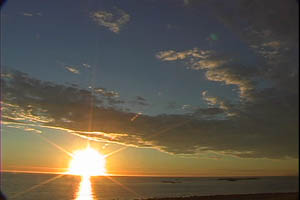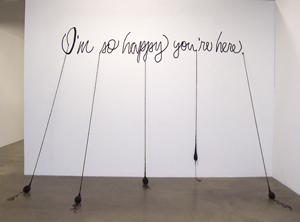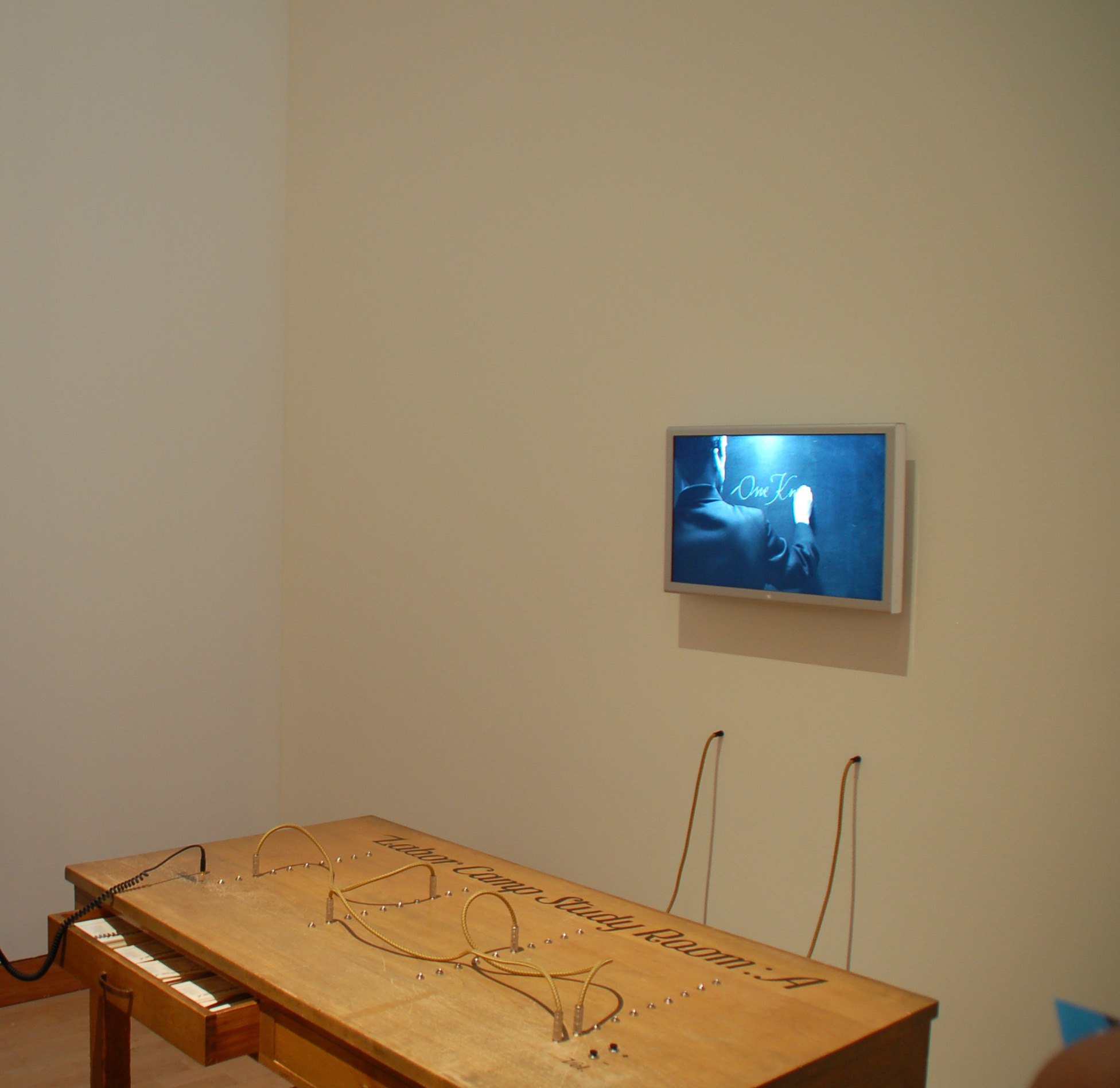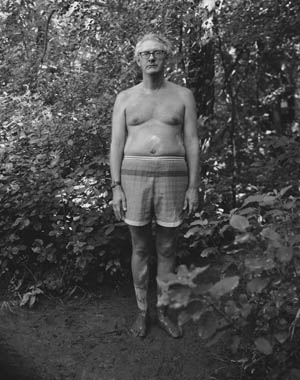Shaking Loose the Darkness of Winter: SAD at the Weisman
Callie Clark-Wiren visits "SAD: Illuminating a Northern View of Darkness," through Sept. 23 at the Weisman Art Museum on the University's east bank campus. There are many kinds of winter.




“SAD: Illuminating a Northern View of Darkness” includes the work of nine Twin Cites-based artists: Ana Lois-Borzi, Jan Estep, Theresa Handy, Chris Larson, Charles Lume, Molly Roth, Andrea Stanislav, Piotr Szyhalski, and Katherine Turczan. It was curated by Diane Mullin, and examines both regional qualities of light and the relation between physical and subjective space.
As you enter the Weisman Art Museum this summer, glimmering light and brightly colored cocktail umbrellas will catch your eye. This 2007 piece, “The Still Time (for Galway Kinnell),” by Charles Matson Lume reflects the path of the sun during the winter and summer solstices, and introduces the current exhibit in the main galleries. Flashes of light from mirrors in the work are inviting, and the small colored tumult of the umbrellas is pleasant, yet the overall effect is minimal. But after all, the effects of the sun’s changing path are subtle.
The Weisman Art Museum is known for its titanium facade and its focus on contemporary and popular exhibits. As a teaching gallery it has gathered an interdisciplinary collection that can serve all of the educational departments at the University of Minnesota. Their last exhibit, on Bob Dylan, cultivated this educational need, but was a step away from their primary focus as an art museum. This new show is a return to modern and contemporary art, and looks to contemporary artists practicing in Minnesota.
“SAD: Illuminating a Northern View of Darkness” was inspired by Seasonal Affective Disorder (SAD), which is common in northern latitudes. Although this title may cause the visitor to assume that the show is all about depression, that’s only half of the story: the exhibition explores the northern human being’s instinctive need for light.
Theresa Handy’s “Window Series” (2005) makes the viewer more aware of the changing hue of the light in Minnesota as the seasons change and the birds migrate. Viewers can become aware of how light’s color can change their moods; the artist has painted each monthly panel a different hue, inviting audience reaction to these different colors.
In her piece “Flashland” (2007) Andrea Stanislav uses video screens in a dark room, one directly in front of the viewer and two in peripheral views, to play with one’s instinctive reaction to look toward light, demonstrating our need to seek out the sun during the winter. It seems the piece was made for this show. Although it explores the biological reaction humans have to light, it does not make any clear connection with depression. Instead, it seems to be a political commentary on the current Iraq War (an astrology chart for this event is at the center of this piece). Darkness comes in many forms.
Some works do address the very real depression that many people experience in the darkness of winter. Jan Estep, a conceptual artist, explores ontology, or the nature of knowable reality, through language, or rather, through words considered as things. She painstakingly hand-stitches definitions of words onto linen, enforcing by this evidence of her time spent a deeper consideration of the word. In her work “Definition: Horizon” (2007) she illuminates how the path of the sun in the winter can create a horizon: or, “that which bounds one’s mental vision or perception” and limits one’s experiences; that is, she explores a literal limit as a way of getting us to think about how our bodily lives, bounded by weather and light, heat and cold, enforce limits.
Estep’s piece “Ha ha ha ha ha” (2005) and Molly Roth’s “I’m So Happy You’re Here” (2005) further explore language in depression: the forced laugh that one might make, or the resonant but empty feeling that the other statement has, when one imagines the depths at which an individual feels depression. But it is Ana Lois-Borzi’s piece, “Sometimes It’s” (2006-07) that sums up the experience of a northern winter: that “sometimes it’s” a storm cloud that is tethered over your head; sometimes you just can’t shake that cloud until the sun comes back and dries it out.
Most of the pieces will get you to start thinking about how the sunlight affects your own life, but there are a few that don’t make a literal connection with the SAD theme, such as “Labor Camp Study Rooms” by Piotr Szyhalski, which is more about the Holocaust—a kind of permanent winter– than the temporary effect of SAD. The pieces stand on their own, but as a collection of work, among the varying artists cohesion is limited. Overall, though, the lethargy and winding-down of life that SAD imposes hovers over it all.